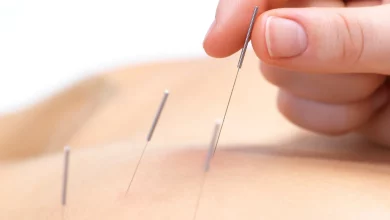What is the Difference Between Physiotherapy and Massage? | Physiotherapy Abbotsford Guide

Introduction
In the world of physical health and rehabilitation, two terms often come up together—physiotherapy and massage therapy. While both aim to promote healing, relieve pain, and improve mobility, they differ significantly in their methods, goals, and applications. For someone seeking care in Physiotherapy Abbotsford, understanding these differences can help in making the right choice based on specific health needs.
This guide will explore the definitions, methodologies, education requirements, benefits, use cases, and limitations of physiotherapy and massage therapy, so you can make an informed decision.
Chapter 1: Defining Physiotherapy
Physiotherapy, also known as physical therapy, is a science-based healthcare profession focused on restoring movement and function when someone is affected by injury, illness, or disability. It incorporates evidence-based techniques to treat various conditions affecting muscles, joints, and nerves.
Core Objectives:
- Pain management
- Rehabilitation after surgery or injury
- Restoring mobility and flexibility
- Managing chronic conditions (e.g., arthritis, diabetes)
- Preventing future injuries
Common Techniques Used:
- Therapeutic exercises
- Manual therapy
- Electrotherapy (ultrasound, TENS)
- Dry needling or IMS
- Postural training
- Gait analysis
In cities like Abbotsford, where active lifestyles and work-related injuries are common, Physiotherapy Abbotsford clinics offer comprehensive treatment plans tailored to individual needs.
Chapter 2: Defining Massage Therapy
Massage therapy is a manual technique that involves manipulating the soft tissues of the body, including muscles, connective tissue, tendons, ligaments, and skin. Its primary goal is to relieve stress, tension, and muscle pain.
Core Objectives:
- Reduce muscle tension
- Improve circulation
- Enhance relaxation
- Promote overall wellness
- Complement other health treatments
Common Massage Types:
- Swedish massage
- Deep tissue massage
- Trigger point therapy
- Sports massage
- Myofascial release
Massage therapy is often used in spas, wellness clinics, and sports centers. In Abbotsford, many residents opt for massage therapy to relieve everyday stress and physical strain, especially in combination with physiotherapy.
Chapter 3: Education and Training Requirements
Physiotherapy
- Requires a Master’s degree in Physiotherapy
- Registration with a regulatory body (e.g., College of Physical Therapists of BC)
- Clinical placements and licensure exams
- Continuing education is often required
Massage Therapy
- Diploma program (usually 2-3 years)
- Registration with a professional college (e.g., College of Massage Therapists of BC)
- Licensing exam
- Continuing education to maintain certification
This distinction is crucial when selecting a care provider in Physiotherapy Abbotsford, where both professions are regulated to ensure public safety.
Chapter 4: Conditions Treated
Physiotherapy Treats:
- Sports injuries (sprains, strains)
- Post-operative rehabilitation
- Chronic pain syndromes
- Stroke rehabilitation
- Neurological conditions (Parkinson’s, MS)
- Joint disorders (arthritis, bursitis)
- Postural dysfunction
Massage Therapy Helps With:
- General muscle soreness
- Stress and anxiety
- Headaches
- Fibromyalgia symptoms
- Soft tissue injuries
- Tension-related back pain
Chapter 5: Techniques Compared
| Technique | Physiotherapy | Massage Therapy |
|---|---|---|
| Manual Therapy | Yes, including mobilization and manipulation | Yes, includes kneading, pressure, etc. |
| Exercises & Rehabilitation | Core component | Not typically used |
| Electrical Modalities | Yes (TENS, Ultrasound, Laser, etc.) | Rarely used |
| Pain Education | Essential part of treatment | Not usually included |
| Goal Setting | Recovery-focused, evidence-based | Wellness-focused |
Chapter 6: The Treatment Process
In Physiotherapy:
- Assessment and diagnosis
- Goal setting
- Tailored treatment plan
- Ongoing evaluation
- Discharge planning and prevention
In Massage Therapy:
- Consultation and history
- Identification of tension areas
- Application of massage techniques
- Relaxation and recovery
- Maintenance sessions as needed
Chapter 7: Who Should You See?
See a Physiotherapist If You:
- Have had surgery
- Are recovering from a sports injury
- Have a chronic pain condition
- Experience movement or postural issues
See a Massage Therapist If You:
- Are dealing with stress or emotional tension
- Experience general muscle soreness
- Want to improve circulation and relaxation
- Need complementary care alongside physiotherapy
In Physiotherapy Abbotsford clinics, it is common to see both physiotherapists and massage therapists working together to provide integrated care.
Chapter 8: Cost and Insurance Coverage
In Canada, many extended health insurance plans cover both physiotherapy and massage therapy, but limits and conditions vary.
- Physiotherapy: Often covered for medically necessary treatment
- Massage Therapy: May require a physician’s referral for insurance coverage
Always check with your provider before beginning treatment in Abbotsford.
Chapter 9: Evidence-Based Differences
Physiotherapy is more research-driven with a foundation in medical science. Most techniques are backed by clinical studies.
Massage therapy also has growing evidence supporting its benefits, particularly for stress and muscle recovery, but it is generally more subjective and wellness-based.
Chapter 10: Myths and Misconceptions
- Myth: Massage can fix joint problems — Truth: It can help with tension, but joint issues need physiotherapy.
- Myth: Physiotherapy is only for injuries — Truth: It also prevents injuries and helps manage chronic conditions.
- Myth: One is better than the other — Truth: They serve different purposes and can complement each other.
Chapter 11: Combining Both Therapies
In many Physiotherapy Abbotsford clinics, patients receive both services as part of a multi-disciplinary care plan. For example:
- Start with massage to relax muscles
- Transition into physiotherapy for targeted rehab
- Use both throughout recovery to optimize results
Chapter 12: Patient Testimonials & Case Studies
Real-life examples of Abbotsford residents who benefited from integrating both therapies:
- Case 1: ACL recovery with physiotherapy supported by massage for tight hamstrings
- Case 2: Chronic neck pain improved significantly with weekly massage and posture correction exercises
- Case 3: Stress-related back tension addressed through relaxation massage, followed by strength training via physiotherapy
Chapter 13: How to Choose the Right Provider in Abbotsford
- Look for credentials (PT or RMT license)
- Ask for clinic reviews or referrals
- Consider your health goals
- Check insurance compatibility
Townline, Sumas Mountain, and other Physiotherapy Abbotsford clinics often list their specialties, which helps you choose the right fit.
Conclusion
While both physiotherapy and massage therapy aim to enhance your physical well-being, they offer distinctly different services. Physiotherapy is clinically focused and used to treat more complex injuries and conditions, while massage therapy centers on muscle relaxation, stress relief, and general wellness.
When used together, they can offer a powerful approach to healing and prevention. Whether you’re recovering from an injury or simply looking to feel better in your body, knowing the difference between these two therapies ensures you get the right help at the right time.
If you’re looking for trusted care, explore your options with Physiotherapy Abbotsford services. The right support can help you live a more active, pain-free life.


